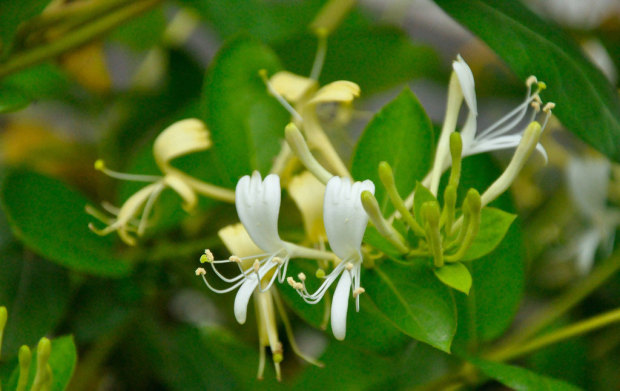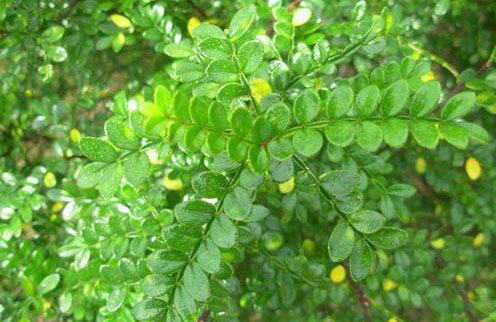Cultivation and culture methods of canna
Canna is a perennial perennial herbaceous flower of the canna family, with fleshy rhizomes, whisker roots scattered around the rhizome nodes, plant height of 50ml 100cm, green or reddish brown leaves like bananas, and slightly white powder, extremely gorgeous large flowers in full bloom, such as crimson, bright yellow, milky white, meat powder and stripes. The outer skin of the capsule is rough, the seeds are black and nearly round, but most of them are immature in North China. The florescence is from May to October. Canna is an important foliage and flowering plant in the courtyard in the south and north of China, which is often planted in clumps or in the center of flower beds. Its bright green, huge leaves, high above the stem tip and bright and beautiful spikes of flowers, with its tenacious and vigorous momentum, attract people to appreciate. Short varieties are most suitable for pot decoration. Some of the original canna are found in America, Africa and tropical Asia. The origin of the large-flowered canna cultivated in the courtyard is unknown and may be a hybrid. Strong sex, no choice of soil, but fear of strong wind and frost. Like humid and well-drained and fertile deep loam; a sunny and warm climate.

The method of dividing the rhizome is used for the propagation of canna. In the first ten days of April, the old rhizome is separated. There are 3 buds on each piece, the planting depth is about 8 Mel 10 cm, and the plant spacing is about 60 mi 80 cm. It is appropriate to apply fertilizer and water twice before flowering. The soil for potted plants should be cultivated in nutrient-rich soil. During the growth period, we should pay attention to topdressing, and often keep the soil loose and moist, so that the plant will grow luxuriantly, have more flowers and have a long flowering period. The cultivation and cultivation method of canna is a perennial herbaceous flower of the canna family, which has fleshy rhizomes and fibrous roots scattered around the rhizome nodes. The plant is 50m high, with green or reddish brown leaves like bananas and slightly white powder. The extremely gorgeous large flowers are in full bloom, such as crimson, bright yellow, milky white, meat powder and stripes. The outer skin of the capsule is rough, the seeds are black and nearly round, but most of them are immature in North China. The florescence is from May to October. Canna is an important foliage and flowering plant in the courtyard in the south and north of China, which is often planted in clumps or in the center of flower beds. Its bright green, huge leaves, high above the stem tip and bright and beautiful spikes of flowers, with its tenacious and vigorous momentum, attract people to appreciate. Short varieties are most suitable for pot decoration. Some of the original canna are found in America, Africa and tropical Asia. The origin of the large-flowered canna cultivated in the courtyard is unknown and may be a hybrid. Strong sex, no choice of soil, but fear of strong wind and frost. Like humid and well-drained and fertile deep loam; a sunny and warm climate. The method of dividing the rhizome is used for the propagation of canna. In the first ten days of April, the old rhizome is separated. There are 3 buds on each piece, the planting depth is about 8 Mel 10 cm, and the plant spacing is about 60 mi 80 cm. It is appropriate to apply fertilizer and water twice before flowering. The soil for potted plants should be cultivated in nutrient-rich soil. During the growth period, we should pay attention to topdressing, and often keep the soil loose and moist, so that the plant will grow luxuriantly, have more flowers and have a long flowering period. If you want to enjoy the flower posture of canna on May Day, you should take out the roots in December, cut the stems and leaves, bury the sturdy and fat roots with sand, put them in a sunny place of about 25 degrees, often spray water, and sprout soon. Then choose strong buds and plant them in a pot with a caliber of about 25 centimeters every 3mur. they can blossom when planted in a sunny place at a high temperature. To welcome the May Day, you can also pot the roots in summer (June to July) and use them as potted plants for the "National Day". Whether to blossom early or late, more basal fertilizer should be applied when potted, and topdressing before flowering is more indispensable. In late autumn in the north, after the flowers and leaves are withered and yellow, they should dig out the roots, dry them slightly, bury them in sandy soil, put them in a room that does not freeze, or bury them in the sunny soil of the courtyard, and check them two or three times in winter to prevent them from being exposed to dampness, heat or freezing or overdrying so as to make the roots shrink. In the south of the Yangtze River basin, there is no need to dig out the roots in winter, and then dig out and plant them after the new buds are issued in spring. Seeds can be used to breed new varieties. At the beginning of April, the hard seed coat is filed with a small cone before sowing, and then soaked in warm water for a day. The seeds should be sowed in loose soil and keep the soil moist after sowing. If there is a temperature of 22 rain and 25 degrees, it can germinate in about a week. Sowing seedlings can blossom in that year. However, the flower color and flower shape often change, and it will take several years to select a good single plant with stable flower characters from the seedlings. The full name of the cultivation and conservation variety of canna: canna. The variety is also known as Cannasp. Subject key words: canna flowers, flower beds, flowers. Variety introduction [biological characteristics] Canna family perennial herbs, underground with stout fleshy rhizomes, underground stems erect unbranched. The leaves are alternate, the leaf blade is broad and the petiole is sheathlike. Dichotomous Cymes, involucral bracts are broad leaf-shaped; pistils and stamens are petalized, and the petal of one stamen is often rolled downward, called labellum. Capsule globose, seeds dark brown. Florescence, summer and autumn.
[habits] originated in America. Like warm, hot, sunny environment, with a certain degree of cold resistance, the northern part of the ground withered in winter. Require thick, well-drained soil, but also resistant to barren and short-term stagnant water. [species] C.indica is about 12 meters tall, with green stems and leaves, long oval leaves, 10 cm long and 15 cm wide, inflorescences small and sparse, florets often 2, petals narrow, erect, bright red, lips orange with red spots. Purple leaf canna (C.warscewiczii) plant height is about 1 meter, stems and leaves are purple-brown, involucral bracts are brown, calyx and petals are purplish red, petals deep purplish red, lip bright red. Large flower canna (C.generalis) is an improved species of canna, 15 meters high, stems and leaves are powdered, leaves are large, wide oval, about 40 cm long, 20 cm wide total pedicel long, small flowers large, colorful, calyx, petals are white powder, petals upright and unbent. Italian canna (C.orchioides), improved from many species and varieties, is about 1 meter tall, with green or bronze leaves, solitary inflorescences, erect, large, colorful florets, tubular base and broad and soft petals. [culture and cultivation] the multi-row split-plant method can also be sown and cultured. Cut the rhizome into several parts and plant them, and note that each part must retain 2-3 buds. The sowing method is mainly used for breeding, because the seed shell is hard, it should be pretreated before sowing, and the temperature is maintained at 25 ℃, about 2-3 weeks. General spring cultivation (May Day flowers, can be planted in the greenhouse in advance), it is appropriate to cover the soil with a depth of 10 cm, 1 part of peat soil, 1 part of coarse sand, 1 part of garden soil, and add a sufficient amount of base fertilizer, topdressing once every 10 days during the growing period. and ensure that the substrate is moist; after the aboveground part withered in autumn, the rhizome can be dug out and placed in a cold environment, or left in the basin.
- Prev

Cultivation and Culture methods of Flos Lonicerae
Honeysuckle is also called honeysuckle vine, mandarin duck vine or double flower, because it is a kind of vine, the flower is snow-white at first, then golden, and it is also called honeysuckle because its leaves do not wither through winter, the new leaves will come out in spring, and the old leaves will slowly fall away. Its rattan branches can be wound around other things
- Next

The difference between incense wood and pepper wood
Many flower lovers have bought a pot of fragrant wood to ward off mosquitoes. Don't you know that maybe this is just a pot of pepper wood, and generally speaking, most of the fragrant wood in the flower market is actually pepper wood? let's take a look at the difference between incense wood and pepper wood.
Related
- Fuxing push coffee new agricultural production and marketing class: lack of small-scale processing plants
- Jujube rice field leisure farm deep ploughing Yilan for five years to create a space for organic food and play
- Nongyu Farm-A trial of organic papaya for brave women with advanced technology
- Four points for attention in the prevention and control of diseases and insect pests of edible fungi
- How to add nutrient solution to Edible Fungi
- Is there any good way to control edible fungus mites?
- Open Inoculation Technology of Edible Fungi
- Is there any clever way to use fertilizer for edible fungus in winter?
- What agents are used to kill the pathogens of edible fungi in the mushroom shed?
- Rapid drying of Edible Fungi

